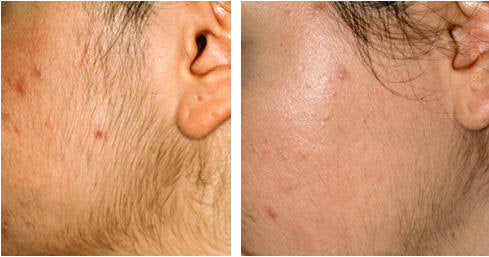Laser hair removal has gained widespread popularity as a long-term solution for unwanted hair. However, achieving optimal results with this treatment requires a nuanced understanding of how different skin types respond to lasers. Customizing treatments based on skin type ensures efficacy while minimizing risks.
This article delves into the specifics of ideal laser hair removal for various skin types, highlighting the importance of tailored approaches for the best outcomes.
Understanding Laser Hair Removal
Laser hair removal works by targeting melanin in hair follicles with concentrated light. This light converts to heat, damaging the follicles and inhibiting future hair growth. The success of this procedure hinges on the contrast between hair and skin color, making the understanding of skin types crucial.
The Fitzpatrick Skin Type Classification
The Fitzpatrick scale is a classification system that categorizes skin types based on their response to ultraviolet (UV) light. It ranges from Type I (very fair) to Type VI (very dark). This scale is essential for determining the appropriate laser settings and techniques for hair removal.
Fitzpatrick Skin Type I and II
Characteristics:
- Type I: Very fair skin, always burns, never tans.
- Type II: Fair skin, burns easily, tans minimally.
Laser Hair Removal Considerations: People with Type I and II skin types generally respond well to laser hair removal because of the high contrast between their light skin and dark hair. The ideal lasers for these skin types are Alexandrite (755 nm) and Diode (810 nm) lasers, which are highly effective at targeting melanin in hair follicles while minimizing skin damage.
Treatment Customization:
- Laser Choice: Alexandrite or Diode lasers.
- Settings: Lower fluence levels to avoid skin irritation and burns.
- Cooling Techniques: Enhanced cooling methods to protect the skin, such as contact cooling or cryogen spray.
Fitzpatrick Skin Type III and IV
Characteristics:
- Type III: Medium skin, burns moderately, tans uniformly.
- Type IV: Olive skin, rarely burns, tans easily.
Laser Hair Removal Considerations: These skin types have a higher melanin content, which increases the risk of skin damage if not properly managed. Nd
lasers (1064 nm) are often recommended for these types due to their deeper penetration and lower melanin absorption, reducing the risk of hyperpigmentation.
Treatment Customization:
- Laser Choice: Nd
lasers.
- Settings: Moderate fluence levels to balance effectiveness and safety.
- Cooling Techniques: Aggressive cooling strategies to prevent overheating and protect the skin.
Fitzpatrick Skin Type V and VI
Characteristics:
- Type V: Brown skin, very rarely burns, tans very easily.
- Type VI: Dark brown or black skin, never burns, deeply pigmented.
Laser Hair Removal Considerations: For these skin types, the high melanin concentration poses a significant challenge. The risk of burns, hyperpigmentation, and scarring is elevated. Nd
lasers are preferred due to their wavelength, which bypasses superficial melanin and targets deeper hair follicles effectively.
Treatment Customization:
- Laser Choice: Nd
lasers.
- Settings: Lower fluence and longer pulse duration to minimize skin damage.
- Cooling Techniques: Robust cooling mechanisms to ensure skin safety, such as dynamic cooling devices.
Factors Influencing Treatment Customization
Hair Color and Thickness
Hair color and thickness significantly affect laser hair removal efficacy. Dark, coarse hair absorbs more laser energy, making it easier to treat. Fine, light-colored hair, on the other hand, is more challenging and may require additional sessions or alternative treatments like electrolysis.
Skin Sensitivity
Skin sensitivity varies among individuals and influences the choice of laser settings and cooling techniques. A thorough assessment of skin sensitivity helps in customizing treatment to avoid adverse reactions.
Pre-Treatment and Post-Treatment Care
Customized pre-treatment and post-treatment care are essential for all skin types. This includes avoiding sun exposure, using appropriate skin care products, and following specific guidelines to minimize risks and enhance results.
Technological Advancements
Advances in laser technology continue to improve the safety and efficacy of hair removal treatments for all skin types. Innovations such as dual-wavelength lasers, improved cooling systems, and real-time skin monitoring enhance the ability to customize treatments effectively.
Managing Risks and Complications
Common Side Effects
Common side effects of laser hair removal include redness, swelling, and mild discomfort, which typically subside within a few hours to days. These effects can be managed with proper cooling and post-treatment care.
Hyperpigmentation and Hypopigmentation
Hyperpigmentation (darkening of the skin) and hypopigmentation (lightening of the skin) are potential risks, especially for darker skin types. Customized laser settings and careful monitoring are crucial to minimize these risks.
Burns and Scarring
Burns and scarring are rare but serious complications. These risks can be mitigated by using appropriate laser types, settings, and cooling techniques tailored to the individual’s skin type.
The Importance of Professional Expertise
Choosing a qualified and experienced practitioner is vital for safe and effective laser hair removal. Professionals with a deep understanding of different skin types and laser technologies can tailor treatments to achieve optimal results while minimizing risks.
Conclusion
Laser hair removal is a versatile and effective solution for unwanted hair, but achieving the best results requires a customized approach based on individual skin types. Understanding the Fitzpatrick skin type classification and its implications for laser settings, cooling techniques, and overall treatment customization is crucial. With the right expertise and technology, laser hair removal can be safely and effectively performed on all skin types, providing long-lasting results and enhanced confidence for individuals seeking smoother, hair-free skin.

